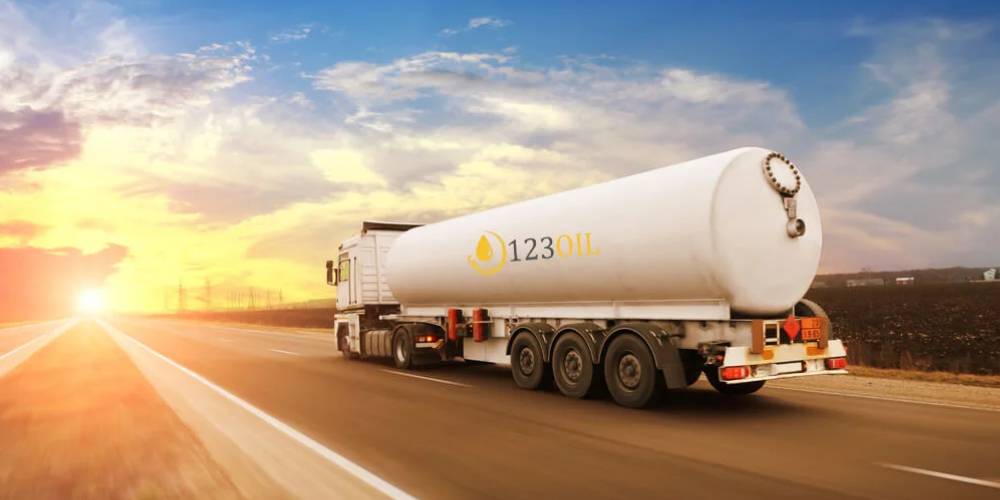The maritime industry is the backbone of global trade, moving billions of tonnes of goods across the oceans every year. Behind this enormous network lies a critical component that keeps the entire system moving, marine gas oil (MGO). Often referred to as marine diesel oil or ship fuel, this refined fuel is essential for powering vessels of all sizes, from fishing boats to large cargo carriers.
In this detailed guide, we’ll explore everything about marine gas oil, what it is, how it’s used, its advantages, environmental considerations, and why it remains one of the most important fuels in the shipping world today.
What Is Marine Gas Oil (MGO)?
Marine gas oil, often abbreviated as MGO fuel, is a type of distillate fuel designed specifically for marine engines. It’s similar in composition to regular diesel used in road vehicles, but is formulated to meet the demanding requirements of aquatic environments.
MGO is derived from the middle distillates of crude oil through the refining process. It’s lighter, cleaner, and more refined than heavy fuel oil (HFO), making it more efficient and compliant with modern environmental regulations.
The fuel is primarily used in smaller vessels, auxiliary engines, and ships operating in Emission Control Areas (ECAs) where low-sulphur content is mandatory.
The Composition and Properties of Marine Gas Oil
MGO is composed of hydrocarbons in the C10–C20 range, giving it chemical characteristics similar to those of automotive diesel. It typically contains low levels of sulphur, depending on the grade and local regulations.
Key properties include:
- Sulphur Content: Usually below 0.1% in ECAs to comply with IMO (International Maritime Organisation) regulations.
- Viscosity: Low, allowing easy flow and combustion in engines.
- Flash Point: Above 60°C, making it safer to store and transport.
- Density: Approximately 850 kg/m³ at 15°C.
These properties make MGO a stable, efficient, and cleaner-burning option compared to heavier marine fuels.
Marine Gas Oil vs. Marine Diesel Oil
Though often used interchangeably, marine gas oil and marine diesel oil (MDO) differ slightly.
- Marine Gas Oil (MGO): A distillate fuel similar to automotive diesel, offering cleaner combustion and lower emissions.
- Marine Diesel Oil (MDO): A blend of distillate and residual oils, slightly heavier and containing more impurities.
MGO is more refined and suitable for vessels operating under strict emission standards, while MDO is typically used in older engines or in regions with less stringent regulations.
Why MGO Fuel Is Preferred in Modern Shipping
Over the past decade, global environmental regulations have pushed the maritime industry to move towards cleaner fuels. The IMO 2020 sulphur cap, for example, limits sulphur content in marine fuels to 0.5% globally and 0.1% in ECAs.
As a result, MGO fuel has become the preferred choice because:
- Low Sulphur Content: Meets international emission standards without requiring exhaust gas cleaning systems (scrubbers).
- Cleaner Combustion: Reduces particulate matter and nitrogen oxide emissions.
- Ease of Handling: Flows easily through pipelines and injectors, reducing maintenance issues.
- Compatibility: Works efficiently in both main and auxiliary engines.
- Immediate Availability: Unlike LNG or biofuels, MGO doesn’t require significant changes in ship design or infrastructure.
Applications of Marine Gas Oil
MGO is used across a variety of vessels, from small boats to large commercial ships. Common applications include:
- Fishing vessels and trawlers: Where reliability and long operating hours are essential.
- Passenger ferries and cruise ships: Especially those operating in environmentally sensitive areas.
- Cargo ships and tankers: During port entry or when sailing within emission control zones.
- Yachts and private vessels: Where performance and cleanliness are priorities.
- Auxiliary engines: For power generation and on-board equipment.
The versatility of MGO makes it indispensable in both commercial and leisure maritime sectors.
Environmental Regulations and Compliance
The International Maritime Organisation (IMO) plays a key role in regulating ship emissions. The MARPOL Annexe VI regulations set strict limits on sulphur oxide (SOx) and nitrogen oxide (NOx) emissions.
Ships operating within Emission Control Areas such as the North Sea, Baltic Sea, and North American coasts are required to use fuels with sulphur content below 0.1%. Marine gas oil easily meets this requirement, offering a straightforward way for ship operators to comply without expensive modifications.
Many shipping companies have transitioned from heavy fuel oil (HFO) to MGO for this reason, it’s a cleaner, compliant, and reliable choice.

Advantages of Using Marine Gas Oil
There are several reasons why marine gas oil remains the go-to fuel for vessels worldwide:
- Cleaner Burning: Produces fewer emissions, reducing environmental impact.
- Lower Maintenance Costs: Cleaner combustion reduces soot buildup and engine wear.
- High Efficiency: Burns efficiently, providing consistent energy output.
- Versatility: Suitable for both main propulsion and auxiliary power.
- Immediate Switch-Over: Ships can switch from HFO to MGO with minimal technical changes.
For vessels that frequently enter ECAs or operate near populated coastal areas, MGO is often the most practical solution.
The Cost of Marine Gas Oil
One of the primary considerations for ship operators is the cost of marine fuel. MGO is more expensive than heavy fuel oil due to its refining process and lower sulphur content. However, the added expense is often offset by compliance with emission regulations and reduced maintenance costs.
With fuel prices fluctuating globally, many shipping companies work with suppliers such as 123 Oil to secure competitive rates and ensure a consistent supply in major ports across the UK and Europe.
Challenges Associated with MGO
While MGO offers several advantages, it also presents challenges that operators must manage:
- Higher Cost: As mentioned, MGO is more expensive than HFO.
- Lubricity Issues: Low-sulphur fuels can reduce natural lubrication, potentially leading to wear unless additives are used.
- Fuel Switching Complications: Transitioning between HFO and MGO can cause temperature and viscosity mismatches if not managed properly.
- Storage Requirements: MGO requires clean, water-free storage tanks to prevent contamination.
Despite these challenges, most ship operators consider MGO an essential part of their fuel strategy, especially with increasing environmental scrutiny.
The Future of Marine Fuels
The maritime industry is gradually transitioning towards greener energy sources such as liquefied natural gas (LNG), hydrogen, and biofuels. However, marine gas oil continues to play a vital role in this shift.
As hybrid and dual-fuel engines become more common, MGO remains a dependable backup and transitional fuel. Its compatibility, availability, and cleaner combustion characteristics make it an ideal choice during this evolution towards sustainability.
Storing and Handling Marine Gas Oil Safely
Proper storage and handling are essential for maintaining MGO quality. Here are some best practices:
- Use Clean Tanks: Contamination with water or residue from heavier fuels can affect combustion efficiency.
- Monitor Temperature: Maintain a stable storage temperature to prevent condensation.
- Regular Filtration: Use filtration systems to remove particles and impurities.
- Check for Microbial Growth: MGO can develop microbial contamination if exposed to moisture, so regular testing is advised.
- Follow Safety Regulations: Always adhere to local port and maritime fuel storage standards.
Following these steps ensures consistent performance and prolongs engine life.
Marine Gas Oil and Sustainability
With increasing emphasis on sustainability, the maritime industry is under pressure to reduce carbon emissions. MGO plays a transitional role by offering a lower-carbon alternative to traditional bunker fuels.
Many suppliers are now offering bio-MGO blends, a mixture of marine gas oil and bio-derived components, which further reduce greenhouse gas emissions without compromising engine performance.
Conclusion
Marine gas oil is an essential component of global shipping, offering a balance between performance, safety, and environmental compliance. Its low sulphur content, clean combustion, and wide availability make it the preferred choice for many vessels today.
As sustainability becomes a top priority, MGO fuel continues to provide a reliable bridge between conventional marine fuels and the cleaner energy sources of the future. Whether powering massive cargo ships or small coastal ferries, marine gas oil keeps global trade moving efficiently, one drop at a time.
Frequently Asked Questions
Marine gas oil is used as fuel for ships, including fishing vessels, cargo ships, and passenger ferries. It powers both main and auxiliary engines.
It’s similar to automotive diesel but refined to meet marine-grade standards, including specific sulphur and viscosity requirements.
MGO is popular because it’s cleaner, more efficient, and compliant with international emission laws, making it suitable for vessels operating in ECAs.
MGO is a lighter, cleaner distillate fuel, while heavy fuel oil is thicker and more polluting. MGO offers easier handling and lower maintenance costs.
MGO will remain a vital marine fuel as the industry transitions to greener alternatives such as LNG and biofuels.










